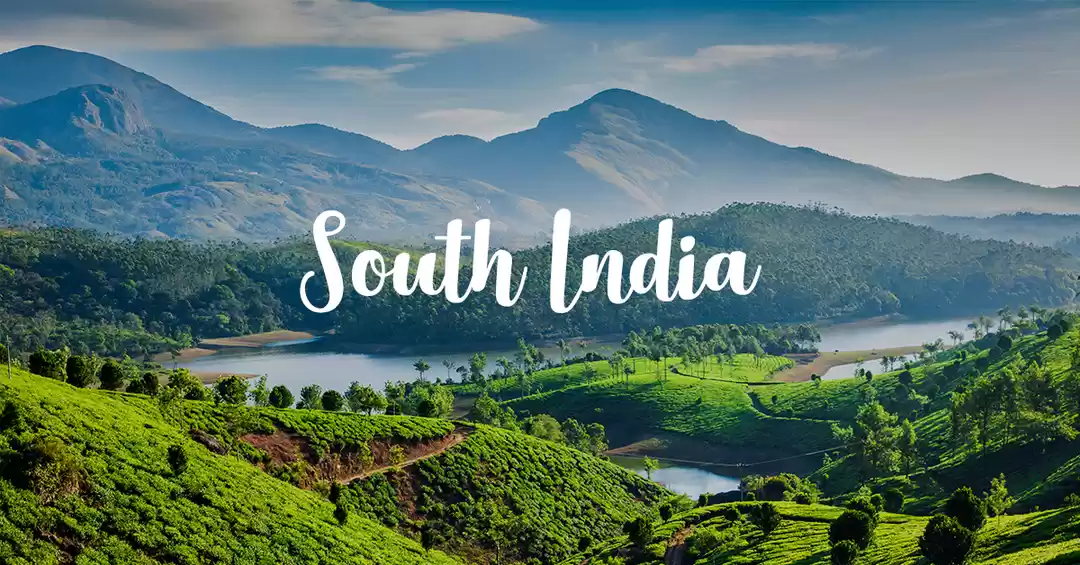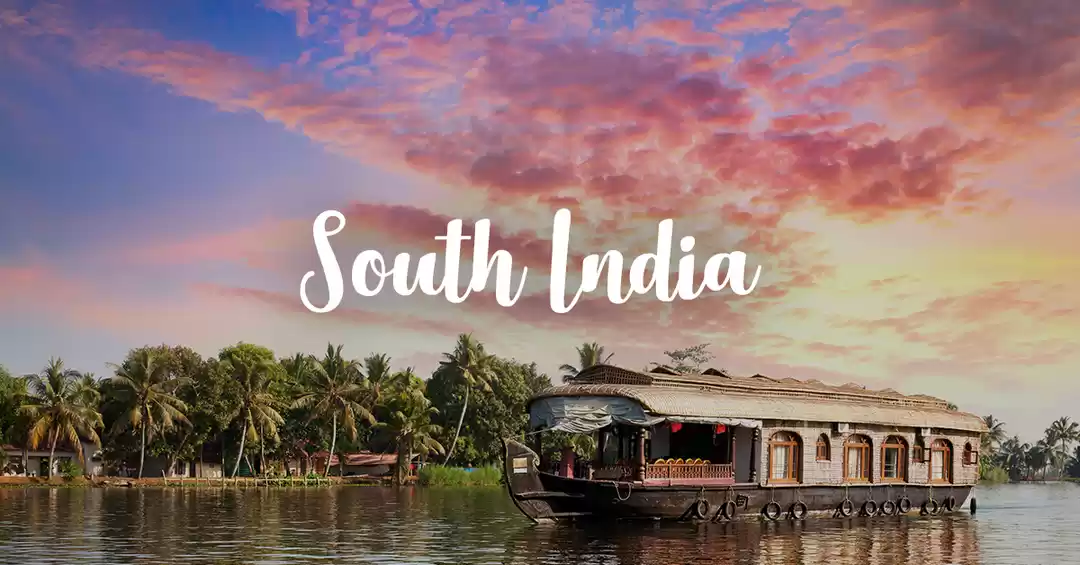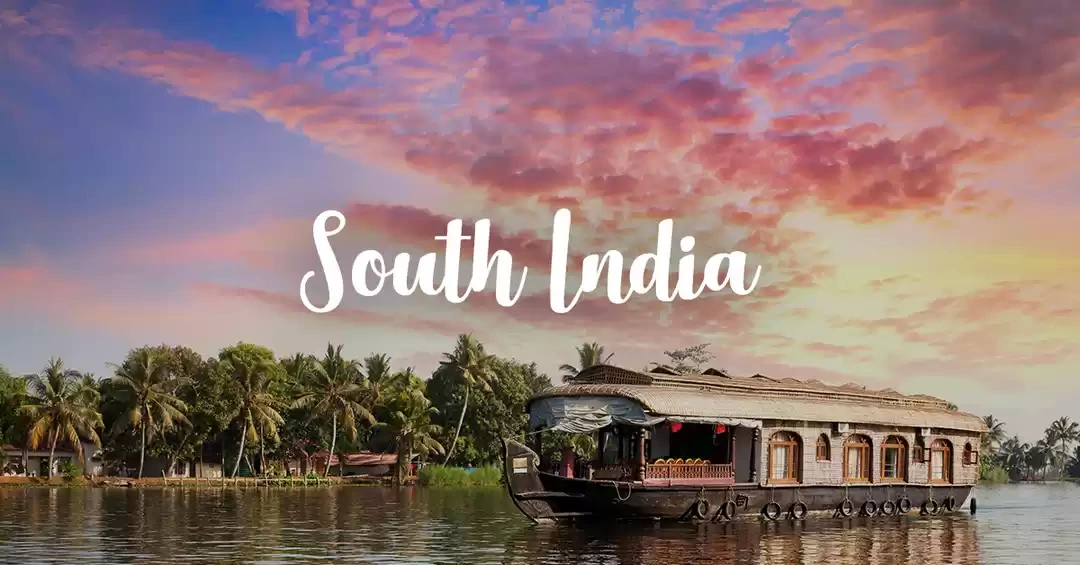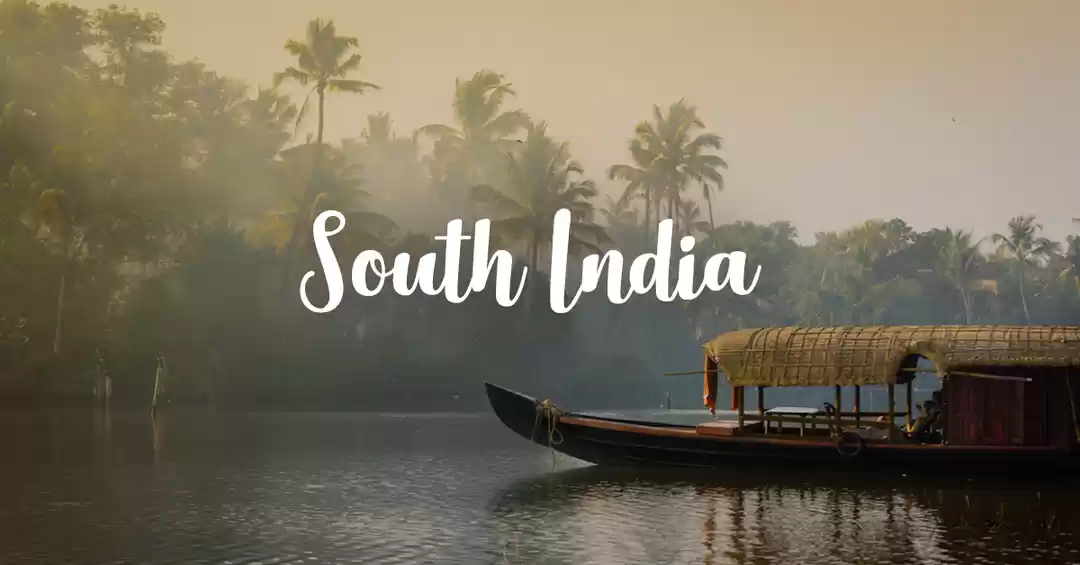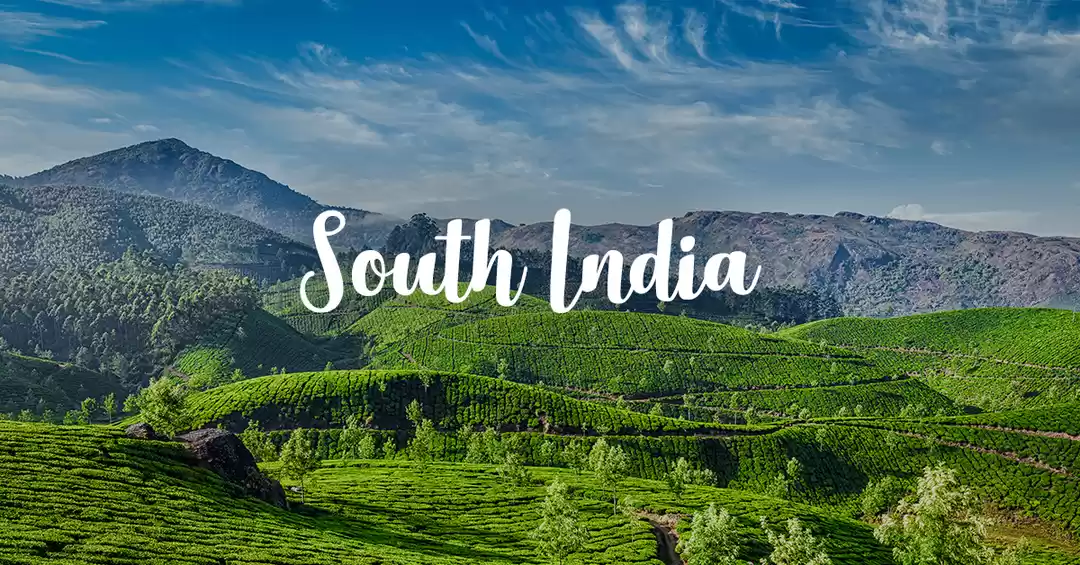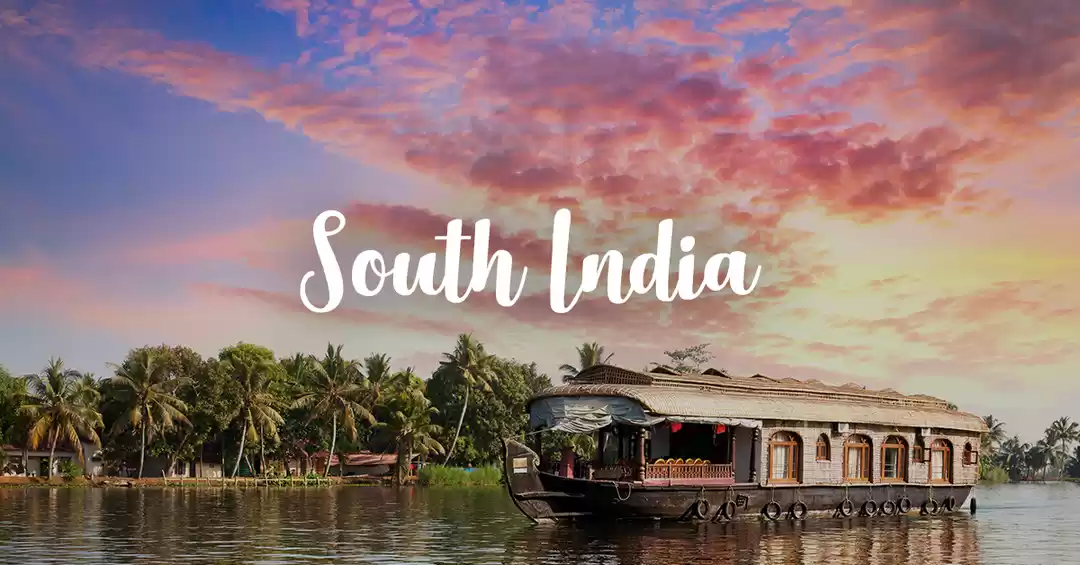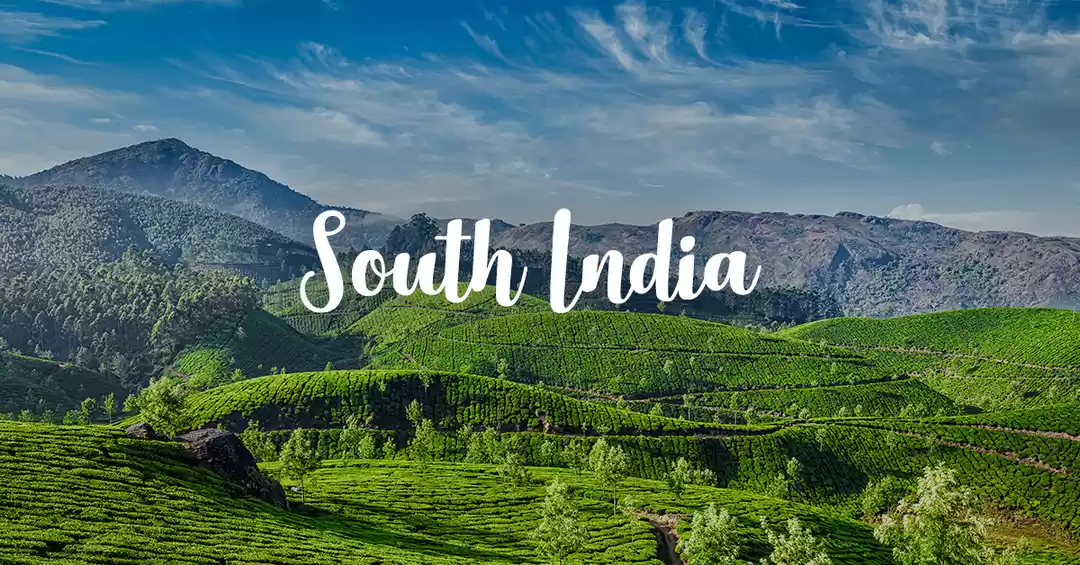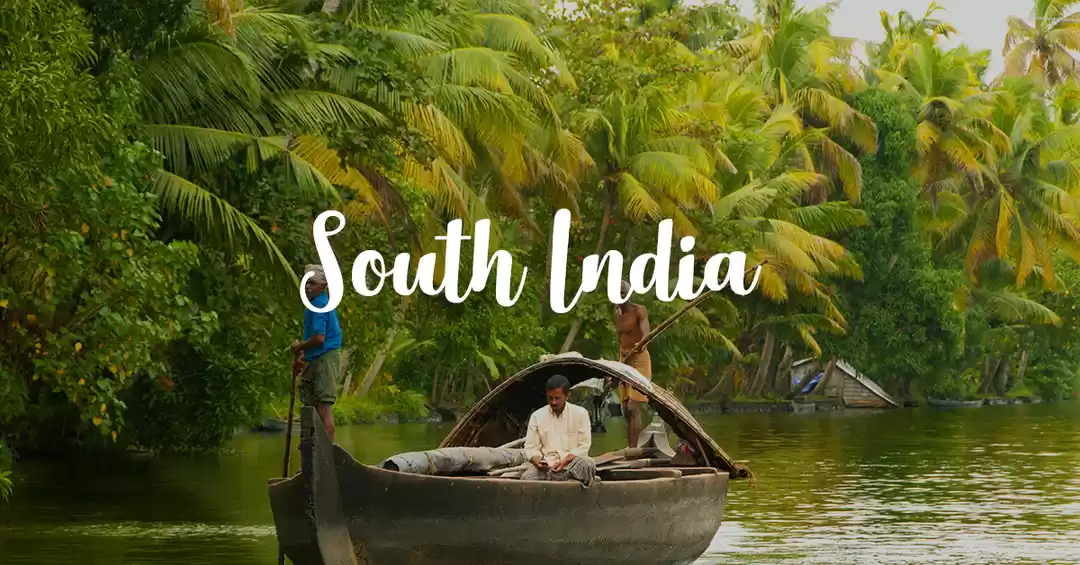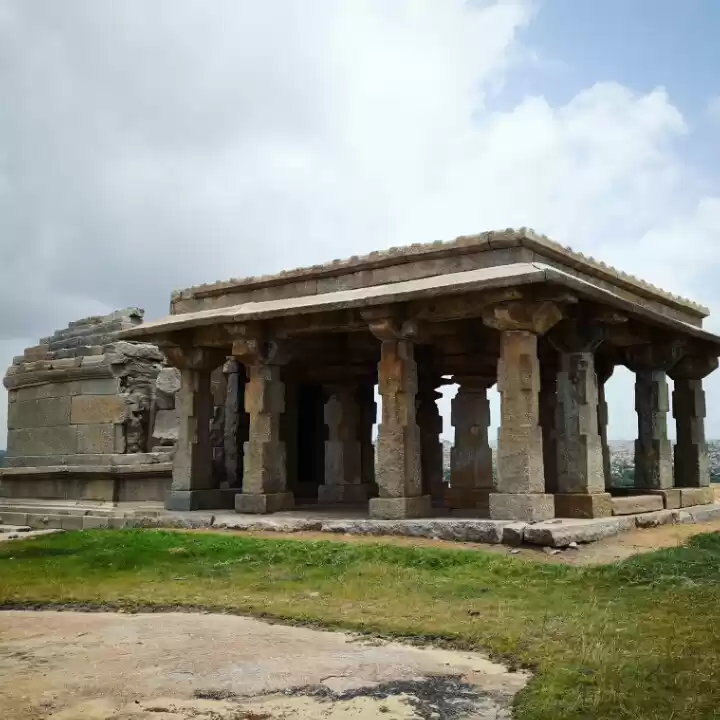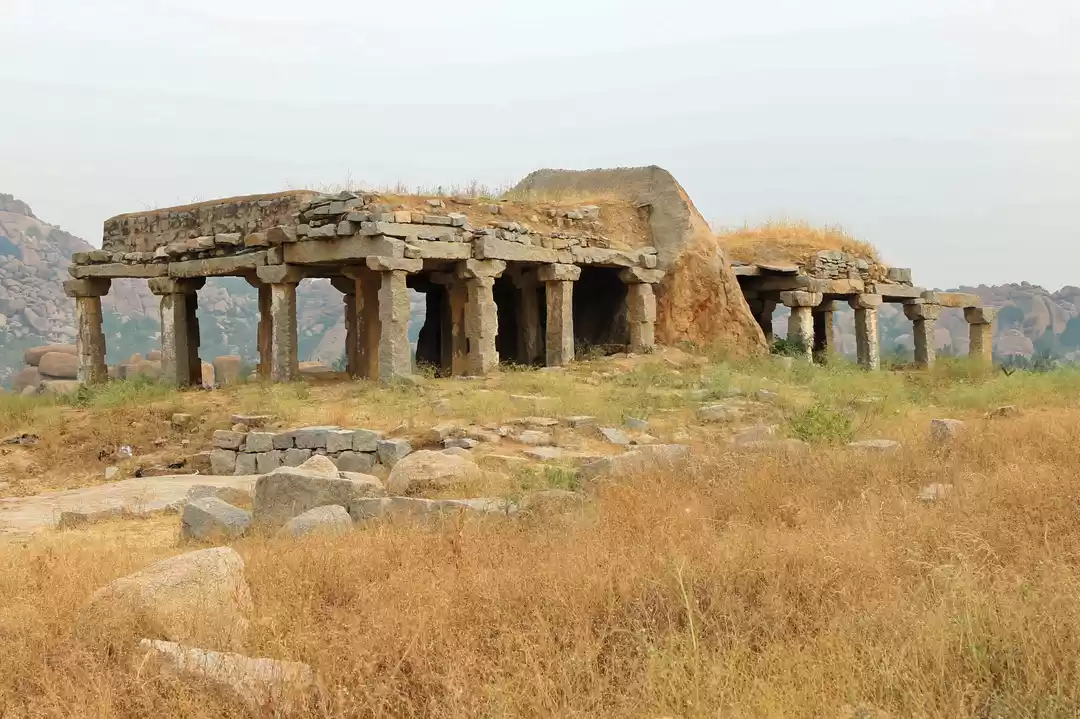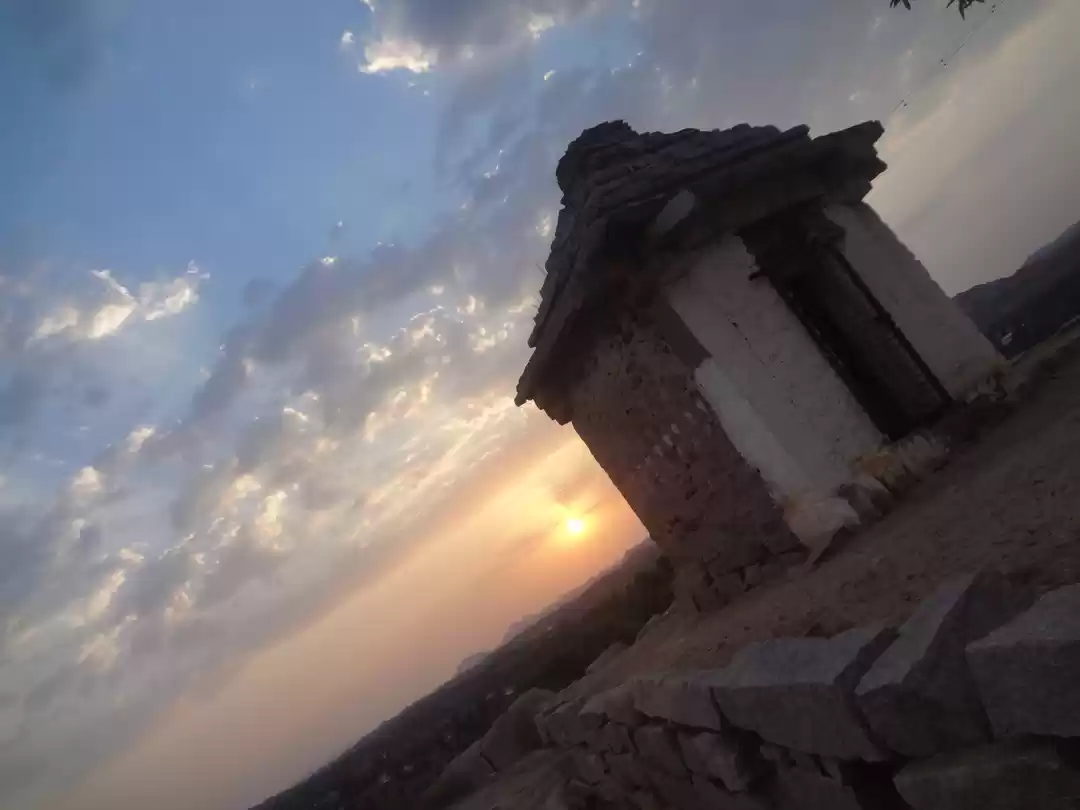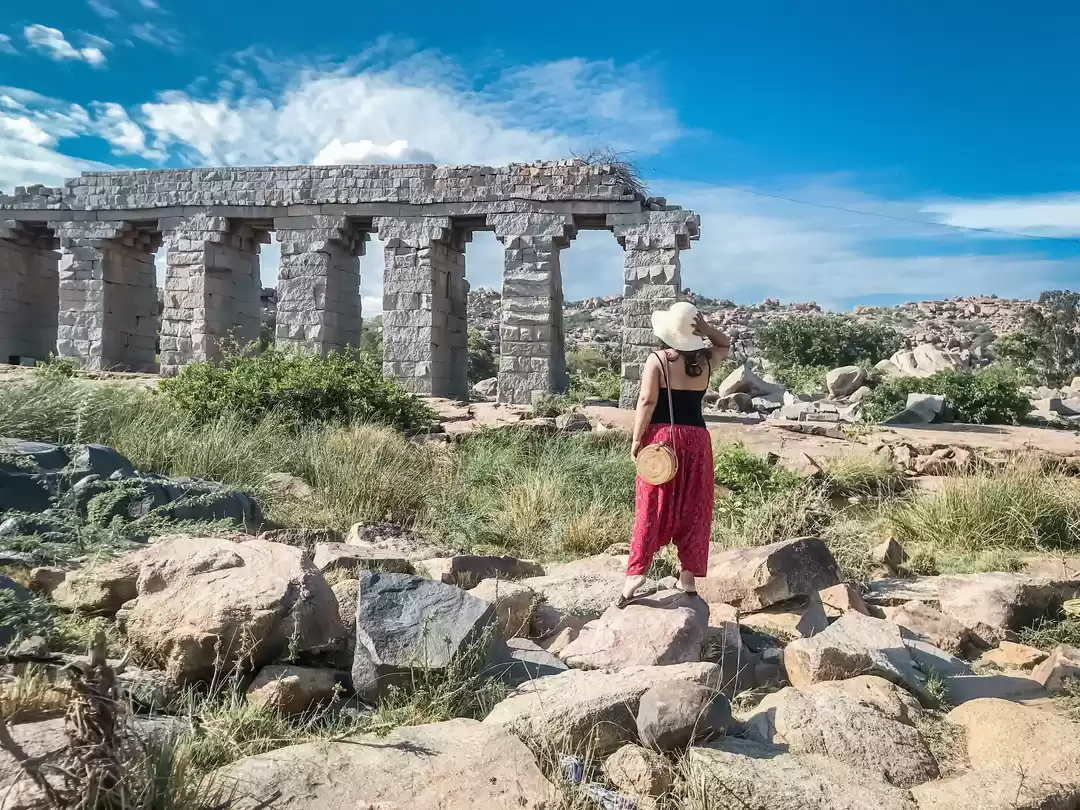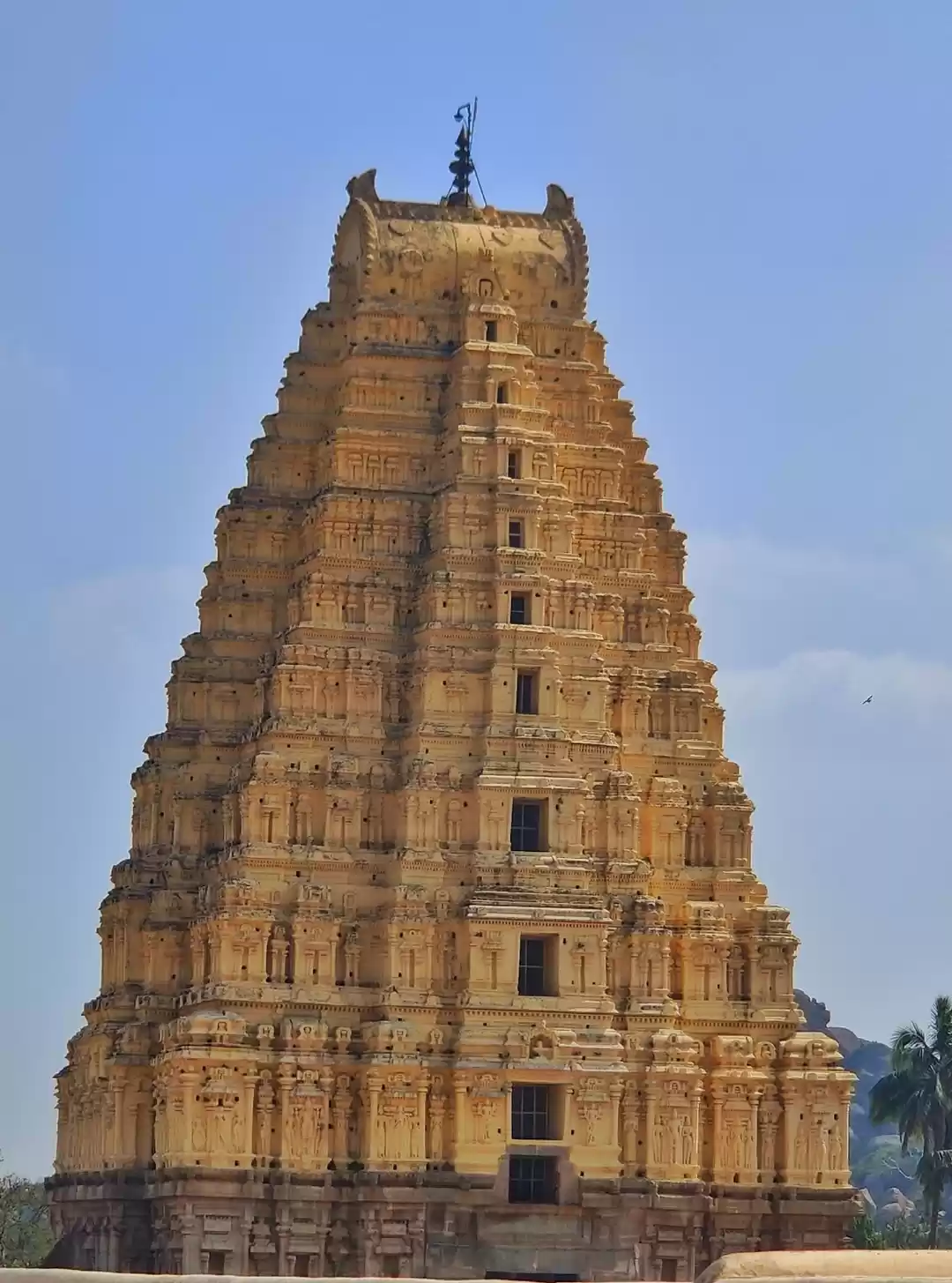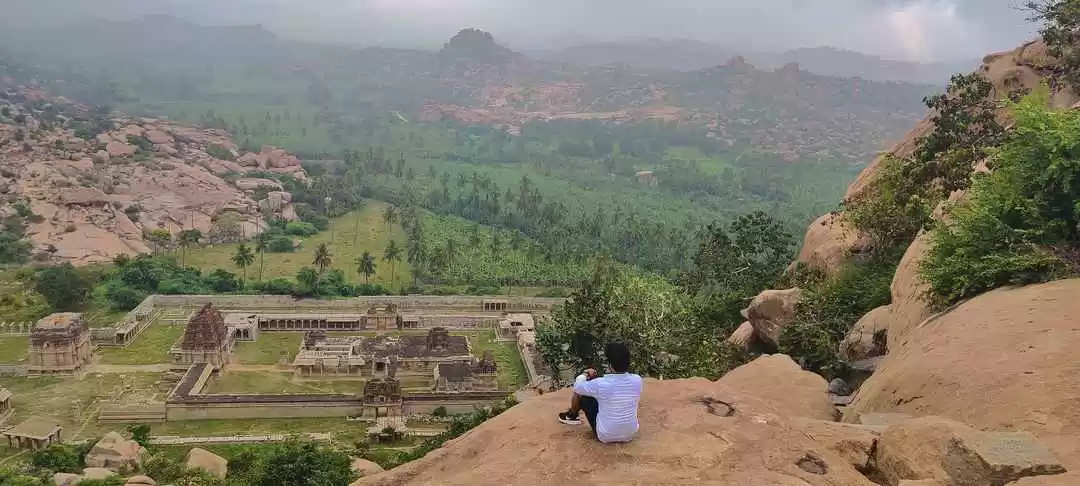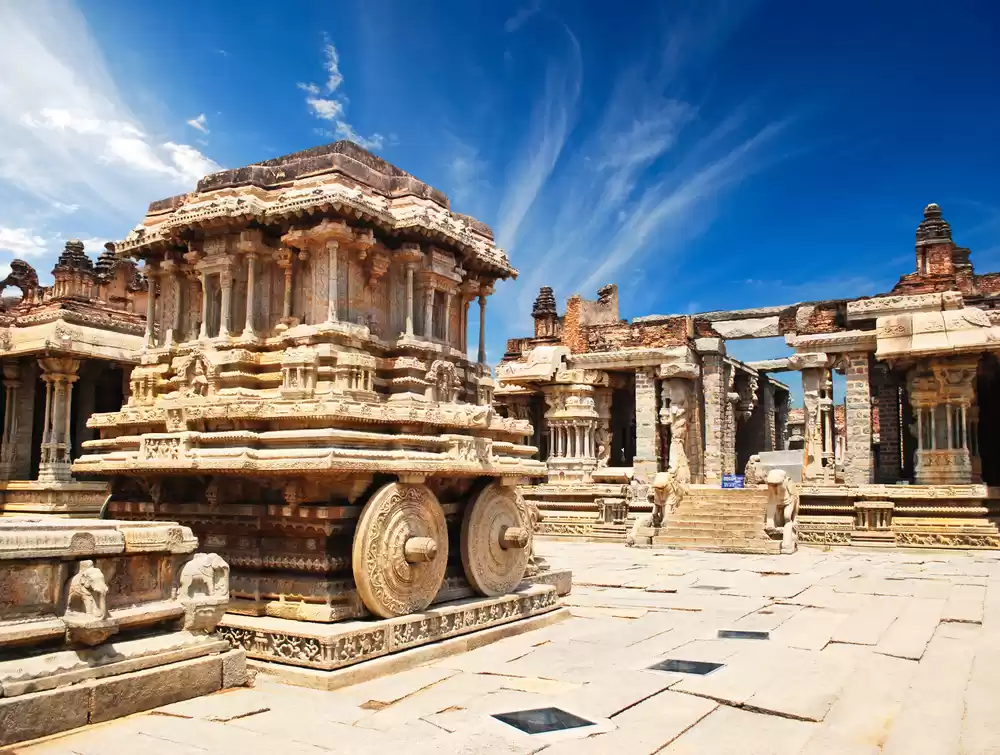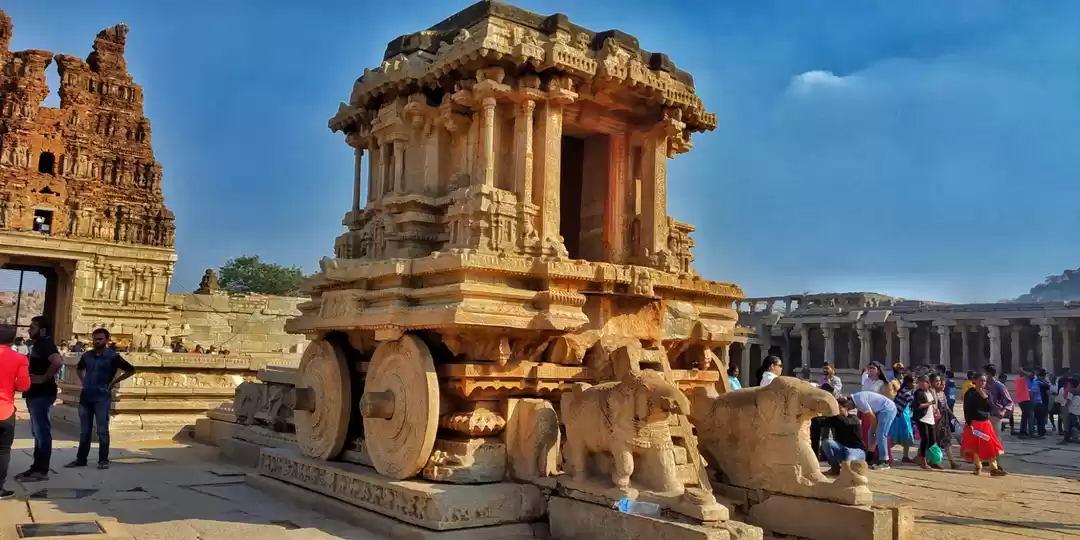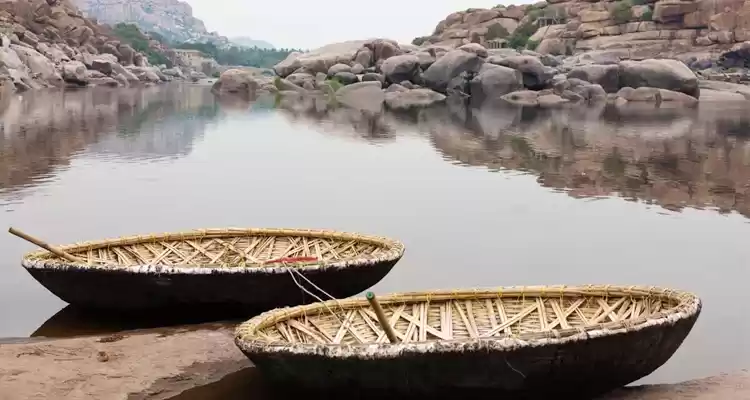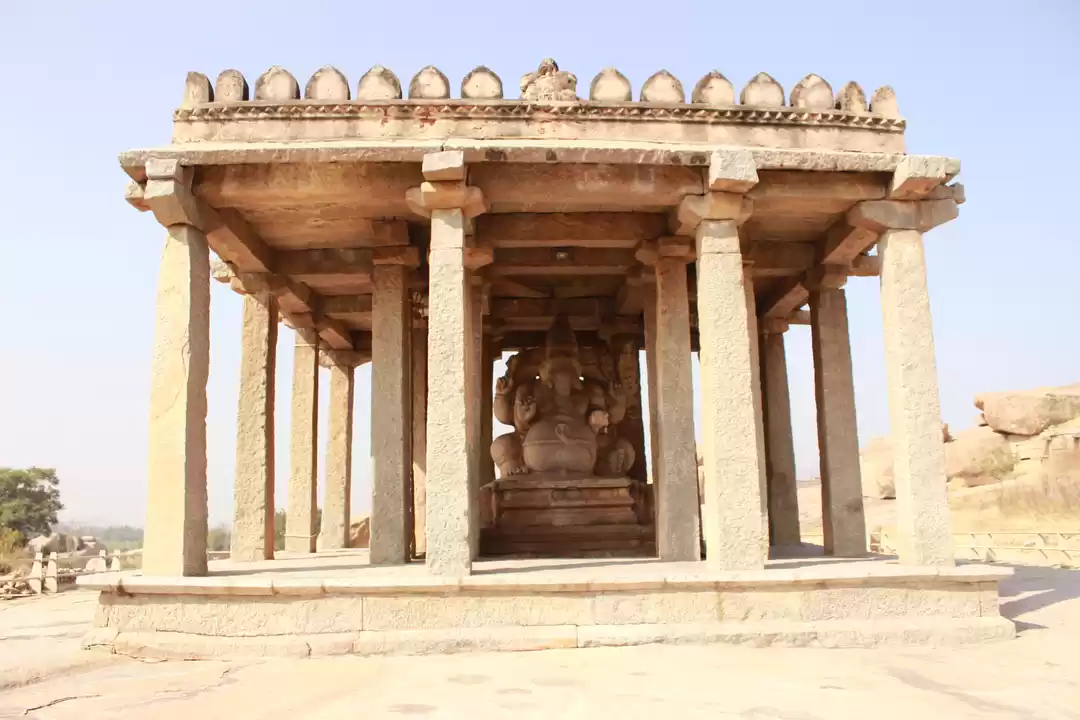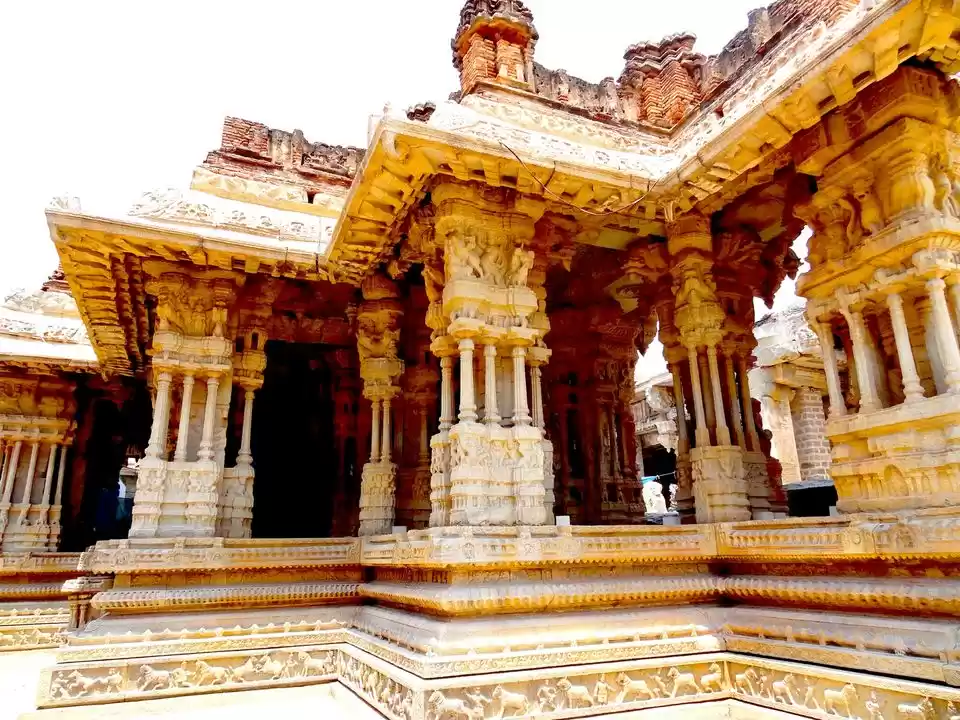
Hampi, the city of ruins, a UNESCO World Heritage site, is situated in the state of Karnataka. It is well known as a backpackers delight due to its laid back, kind of spiritual Aura and hippie vibe.
Hampi was on my bucketlist for the longest time. The moment I came to know the new year is coming on a long weekend, I decided to travel to Hampi and made my long time wish come true.
PLACES NOT TO BE MISSED - Virupaksha Temple, Matunga Hill, Hanuman temple and Hemakuta hill to see sunrise or sunset, Lotus temple, Vitthala Temple, Krishna Bazar, Elephant Stables, Sanapur lake, Stone Chariot.
FAMOUS RESTAURANTS / STAYS- Mango tree, Laughing buddha, Bobby One love, Nargila, Mowgli
Read in detail about the whole itinerary below -
PUNE TO HOSPET
After 9 hours of traveling, I arrived at the town of Hospet at 7:30 AM in the morning.
As soon as I got down from the bus, a horde of autowalas approached me all at once as they were already waiting for the buses to land their first customer. After some bargaining the autowala agreed to charge me Rs 120. You can have breakfast in the town of Hospet and then start the journey to Hampi.
HOSPET TO HAMPI
Hampi is 13-15 km far from Hospet village. You can hop onto a local bus to Hampi from the nearby bus stand or you can take an auto. Bus ticket costs around Rs 15 and the autowala will charge you around Rs 120 to 150 depending on how well are your bargaining skills.
My head was hanging out all the time from the auto as I inhaled the fresh morning air. This ride was a memorable one as I saw the lush green rice farms, coconut trees along the road, horses running on the far away mountains and those beautiful sunflower fields.

The auto dropped me near the Virupaksha Temple. I had booked my stay on the Hippie Island side. So I had to cross the river by boat which is charged at Rs 50 per person for one way trip. After reaching the other side of the river, there are no autowalas or any other transportation available. You have to walk with your luggage till your stay. So even though it is not much distance, make sure you pack light and you are able to carry your own stuff around.
I had a very pleasant stay at Mowgli. The hosts were friendly and polite. The restaurant is alongside the farms and you can even see the river while you are eating your food. The food menu has a lot of variety and quality of food is good. The rooms are pretty decent with swings to chill and hot water is also available during the morning. I also loved to play with the puppies roaming around the property whenever I had spare time. They were so adorable and very well treated.





SHOPPING IN HAMPI
After reaching the guest house, I quickly freshened up and went for breakfast. I would suggest that before you order anything in Hampi just enquire about your order a little as your’s and their version of the food item can be different. I took some rest and then left to have lunch and explore the local market.
The local market on this side (opposite of Virupaksha) of the river is a must visit. After crossing the river you arrive at a lane which has all the shops of clothes, handicrafts and jewellery lined up. I bought some very pretty anklets, necklace, handmade cloth bags, woollen dream catcher and some very inexpensive clothes. The shopkeepers are very friendly and if you can bargain then you can buy stuff at a very affordable price. You can buy souvenirs for your friends and family too.


PLACES TO VISIT IN HAMPI
I had dosa for lunch at a nearby restaurant and then left to visit the Hanuman temple in the evening at 4 PM. As there was no public transport available on this side of the river and hiring a bike for 3 hrs seemed a costly affair to me, I hitch hiked in a sumo to the Hanuman temple.
Also known as the Monkey temple, it is situated on the Anjaneya hill and is known as the birthplace of Lord Hanuman. It is a steep climb of 570 stairs to reach the top but pleasant air and scenic views make it worth. The temple at the top has a huge statue of Hanuman carved out and you can also spot floating rocks inside a glass water vessel to symbolize floating Rama Setu. I was so intrigued after looking at that rock.
I purposely went in the evening because I wanted to witness the much talked about sunsets at Hampi. As you reach the top you get to see the panoramic beautiful views of Hampi , the water flowing in the Tungabhadara river, long spread paddy fields, banana plantation, green forest and boulders spread out till horizon.




I woke up early on my second day and had my breakfast at the Mowgli guest house. Hampi is hot during most of the time of year except during rainy season. Since I visited during the year end, the afternoons were quite hot with a temperature of 32° C to 35° C. I left to explore the ruins very early in the morning when I also had the advantage of less crowd and chaos. If you are visiting the ruins on a public holiday or weekend then be prepared to experience a huge crowd of tourists and school children.
If you go to Hampi, the first place that will catch your eye is the Virupaksha temple, also known as Pampapati Temple, a UNESCO World heritage site. It is located on the south bank of the river Tungabadra, in the ruins of the ancient city of Vijayanagar, capital of the Vijayanagara empire. It is main center of pilgrimage at Hampi, and had been considered the most sacred sanctuary over the centuries.
The Virupaksha temple is dedicated to Lord Shiva, as the consort of the local goddess Parvati, locally known as Pampa, associated with the Tungabadra River. Virupaksha is an avatar of Lord Shiva and among all the surrounding ruins, this temple is intact and is still in use. It believed that this temple has been functioning uninterruptedly ever since its inception in the 7th century AD. That makes this one of the oldest functioning temples in India. This temple has ancient inscriptions which date back to 9th and 10th centuries. Whoaaa!! Pretty ancient stuff right?
You will also find the elephant named Lakshmi in the temple premises. I saw people standing in front of her with a Rs 10 note in hand, which she picks up using her trunk gives it to her master and then blesses the person who gave the money. People take pictures and videos of her and there is a huge queue specifically for this activity. However, I felt very sad for the elephant after seeing her in chains and tamed like this. I do not feel she belongs there at all but that is a different subject altogether. People visiting the temple should take care of their belongings specially purses and food bags as I saw a lot of monkeys snatching things from the public and never returning it. Once gone it is gone forever.
One can buy the Hampi guide from the roadside seller in front of Virupaksha Temple. It has detailed information and map about the important places to visit in Hampi.






Tucked in a corner of the lane near the Virupaksha Temple, I found this restaurant named Mango tree. As every millennial would do, I checked online ratings which were very good. Next thing I remember, I was so full with eating all the yummy food and the mind blowing dessert, that I could not get up. After a quick nap of 20 min in the comfortable seat at the restaurant, I was all charged to paint the town red.
Their Banoffee pie and special thali is a must try.



After having lunch, I left to see the other ruins which were quite far from the Virupaksha temple. I decided to take auto for Rs 200 as it was too hot to drive a bicycle. First I visited the Vitthala temple which was the farthest and one of the famous places in Hampi. TIME TO VISIT - Preferred time would be 8- 10 AM or evening 4-5 PM. The main temple area is quite far from the parking area. There are buses arranged after every 15 min to go till the temple but the waiting time was too long when I reached and I did the whole tour of the place on foot.
TRAVEL TIP - Plan to visit the Lotus Temple and the Vithalla Temple (Stone chariot) on the same day as the ticket that you pay for to enter Vithalla Temple gets you the access to the Lotus Temple as well.






Main attractions at the Vitthala temple are -
Many of you might also know that the new Indian 50 Rupee note has a motif of this stone car on the reverse. Even though the name suggests it is a chariot, it was actually built as a shrine which once upon a time contained the icon of Garuda, mount of Vishnu. Experts say that the Vijayanagara Kings were inspired by the Sun temple at Konark in Orissa and built a similar one here.
It may appear as a monolithic structure but in reality this stone shrine was built with many giant granite blocks. The joints are smartly hidden in the carvings and other decorative features that adorn the Stone Chariot. In front of the chariot two elephants are positioned as if they are pulling the chariot. In fact these stone elephants were brought from elsewhere and positioned here at a later stage. Originally two horses were carved in that position whose tails and the rear legs of the horses can be still seen just behind these elephant sculptures. A broken stone ladder once gave access to the sanctum is kept between the elephants. There was even a dome like superstructure over the chariot which is missing now. However you can see them on the first ever photographs of Hampi taken in 1856 by Alexander Greenlaw (checkout highlights of hampi on my profile here - https://www.instagram.com/weekendwanderer.kom/)
So much history!! Phew ????
Anyways, Vittala Temple and the Stone Chariot are must do things in your Hampi itinerary. Do click the customary photo with the stone chariot as your background. I got mine taken with such difficulty as this place is the most crowded of all the tourist attractions in Hampi.

The large Ranga Mantapa is inside the Vitthala temple which is well known for its 56 musical pillars. These pillars are also known as Sa-Re-Ga-Ma pillars, denoted by musical notes emerging out of them when the pillars are gently tapped. I personally found this place very peaceful and fascinating.


This is located near to the Royal Enclosure of Hampi. Built almost 500 years ago, this lavish bath is surrounded by ornate pillars and intricate interior balconies. It was built as a private bathing chamber for the royal queens.


This is one of the most intriguing places to see in Hampi. Spread over an area of almost 58000 sq metres, this enclosure once housed 40 buildings which includes water tanks, meeting halls, personal chambers, theatre, etc. I hired a guide at a charge of Rs 50 who very elaborately explained to me the significance of each and every structure present here. I suggest hiring a guide here as it is worth the money.
Some of the major attractions were the wall carvings of the female soldiers, camels and elephants, dancers during festivals, the proper canal system, the Stepped tank also known as Pushkarni, pillar sockets, etc. This place truly provides the glimpses of the splendor of the royal life of the Vijayanagara dynasty.



Lotus Mahal, also known as Kamal Mahal or Chitragani Mahal is one of the most remarkable design in the Zenana enclosure at Hampi. As the name suggests this monument looks like an opened lotus bud. The palace is a two-storied building, well-structured symmetrically. It is surrounded by a rectangular wall and four towers. These towers are also in pyramidal shape giving a lotus-like structure visual to the entire mahal.
I was very tired when we got here and the first thing I did was to lie down in the shade of the trees surrounding the palace where my legs could feel the grass and my eyes could look at this marvel of the architecture in front. This mahal is so beautifully carved with patterns like sea creatures and birds on the roof and pillars. I tried to view the mahal from all the angles possible which made me notice that it is so perfectly symmetrical, not a single glitch in the angle or any of the arcs. My mind just screamed “WOW”. Every now and then I get to see some or the other monuments made by the respective Kings in some era. What astonishes me is how best in class, Indian architecture and workers were ages back.


Situated inside the Zenna enclosure, this place was constructed to give shelter to the Royal elephants. I totally loved the symmetry of all the domes and the massiveness of the entire structure. This place is one of the beautiful sites in Hampi.


I hurried to the Matanga hill to see the sunset. This is probably the highest point in Hampi which makes it the best spot to get an aerial view of Hampi and its environs. From the top you can get the view of Tungabhadra river, Achutaya rama temple and Hampi bazaar. The sunset and sunrise are the perfect time to capture this scenic beauty.


I had dinner at the famous restaurant named laughing buddha and it did live up to all the hype. The food was very average but the ambience, music and hippie vibe was totally worth a visit.
I ate dosa in breakfast at a nearby restaurant and set out to get to the other side of the river to explore the remaining of the ruins. I must admit it was quite hot for the winter season and I was regretting not bringing a hat or cap with me.
The first stop was Krishna Bazaar. This place was buried in slit due to it’s low lying terrain and was recently excavated. As soon as you enter, you will see the bazaar streets with structures which completely resemble the shops of that time. I enjoyed most of the afternoon here, resting, dancing and clicking pictures in the entire arena.




Situated on the slope of the Hemakuta hill, is the monolithic sculpture of a 12 feet tall Ganapati. This statue is carved out of a single boulder and the belly of Ganesha has been chiselled in such a manner that it resembles a Bengal gram (known as Kadalekalu in the local language).



Located below ground level, this temple has stairs to go inside where you can see a Shiv Linga and a the Nandi Idol. The insides of this place was very cool and gave an instant relief from all the outside heat. There is a garden outside to relax and take a breath from all the sight seeing. However there is a reason I will remember this place for a long time. I went inside to have a close look at the linga which was enclosed in a very dark and small enclosure. I heard a noise and as soon as I looked up, I saw small light like things on the roof right above the linga. It took me a second to realise that those were bat eyes and they all flew out of that place at that same time. Oh man! I got shit scared for a couple of seconds.





In the mantapa is a linga made of black stone which is considered as the most massive lingas in Hampi. If you are religious then you can visit this place or give it a skip accordingly.
This is the largest of all idols in Hampi about 22 feet tall. It is carved out of single stone. There used to be a Laxmi idol on top of this and hence it was called Laxmi Narasimha. But that idol was destroyed and now it is known as Ugra Narasimha.


I am a sunset lover and if you have heard it right then you know Hampi has the best sunsets. It was 31st of December and somehow I wanted to see the last sunset in a place apart from my home. Here I was at the place where you get to see mesmerising sunsets. I quickly started to climb the Hemakuta Hill which is situated just next to Virupaksha temple. On the way to the sunset point there were many Instagram worthy spots. I took full advantage of it and clicked many pictures. There is Mythological story behind the Hemakuta (hill of gold) Temple which you can read about on the net. The best time to visit Hemakuta is in the morning or evening , when the sun’s rays are slanting. I got to see the most glorious sunset that evening. The entire landscape was covered in golden light, the birds were flying in the sky while the sun looked like an orange ball of fire. I returned to my room with a contented heart and a peaceful grin.






This was my last day in Hampi and I had to make the most of it. I woke up early, had a heavy breakfast and went to hire a bike to explore the dam side of Hampi. I got a Navi bike in Rs 200 along with 2 litres of petrol for half day. The roads are very less crowded and well built with the coconut trees along the sides. You will also see a lot of rice fields everywhere on this side of the town. I halted in between to click some pictures and get a hold of the temples, ruins, boulders and the scenic beauty of the town. One can drive around Hampi without getting bored at all. I totally felt as if I was going from Flintstones place to the Jurassic Park. After reaching the lake, I took a coracle ride in the lake waters. It is pretty cheap and you can bargain too. However the coracle ride is one of the main highlights of Hampi and it surely should not be missed. I would suggest you go in the morning or evening as the sun will not be that bright and it won’t tire you. Swimming enthusiasts are recommended to carry a swimsuit as there are spots for diving and swimming near the lake. However enquire the locals about the water levels and swim friendly spots.









That was the end of my Hampi trip. The time has passed but the memories are fresh. If you are planning for a long weekend gateway with friends or solo then Hampi is recommended. It very safe for solo female travellers as well. It costed me around Rs 12000 for the complete trip. The hotel stay was costly since the prices were higher due to new year celebrations. You can always save in Hampi if you pre book the tickets and stay. The best time to visit would be September to January. This place will be too hot or have heavy rains for rest of the months.
Hampi is known for it’s history and ruins, but to me it was all about meeting warm hearted locals and foreigners, living in huts, roaming around rice fields and coconut trees, watching beautiful sunsets, eating delicious food and getting lost in the peacefulness of this town. Plan your trip soon if you haven’t already and let the hampiness begin.
Comment if you have any doubts and I will be happy to help. You can also follow my travel diaries on Instagram by name WeekendWanderer.Kom



